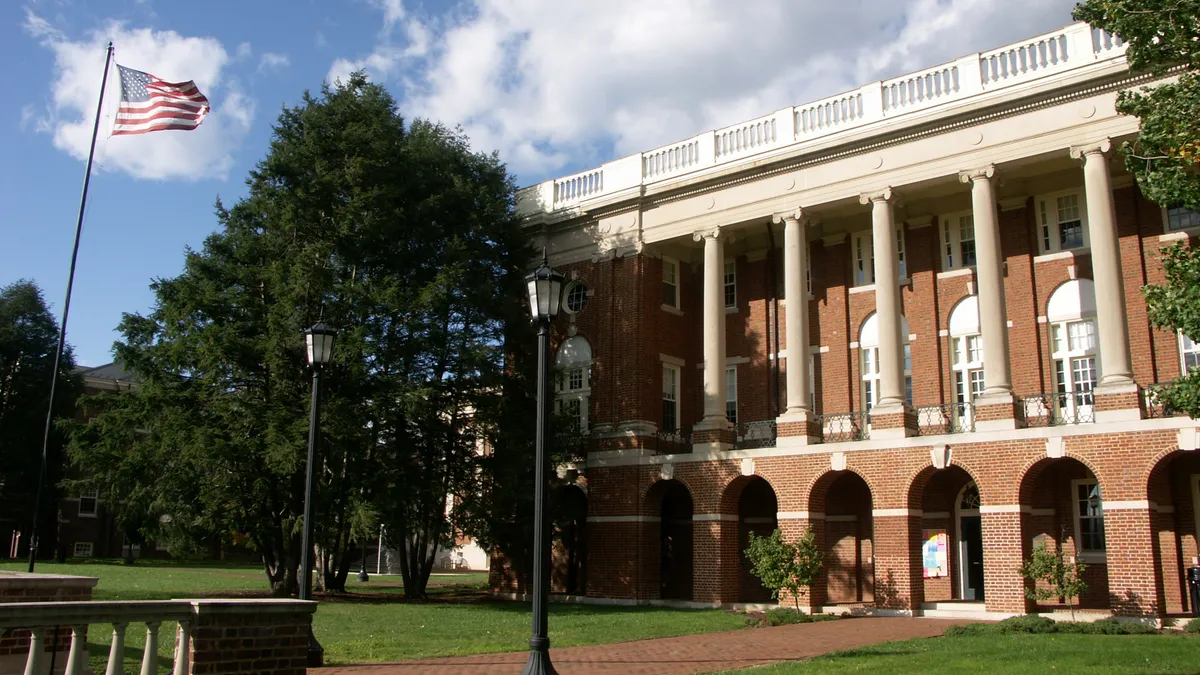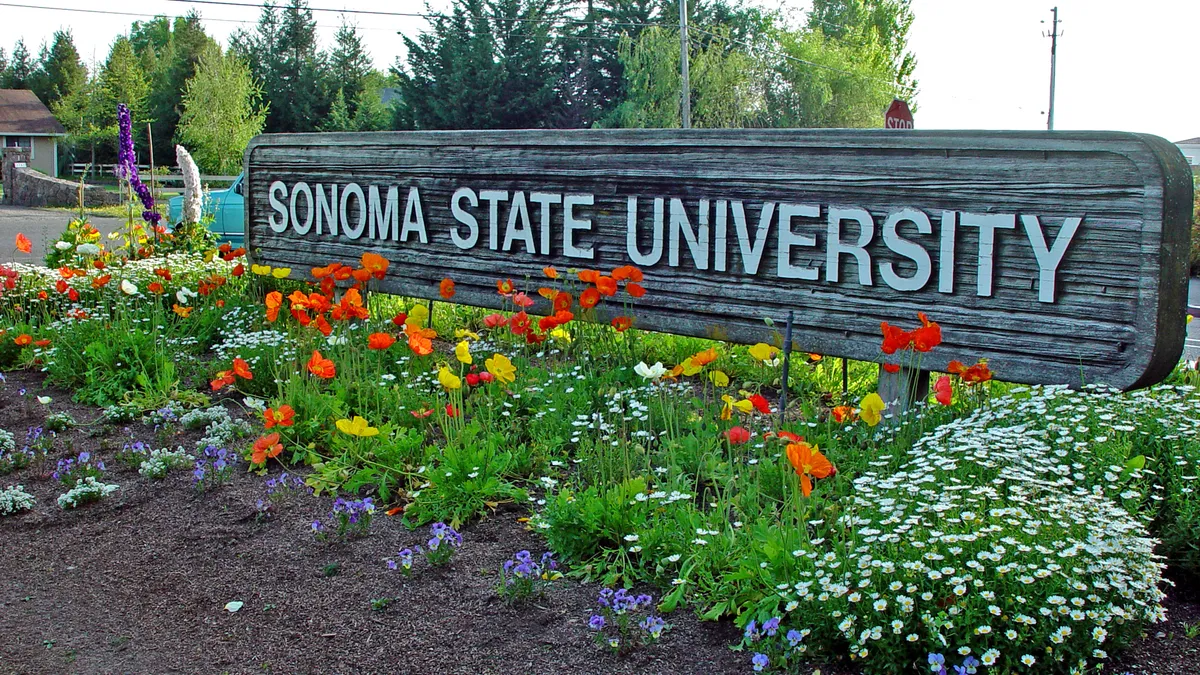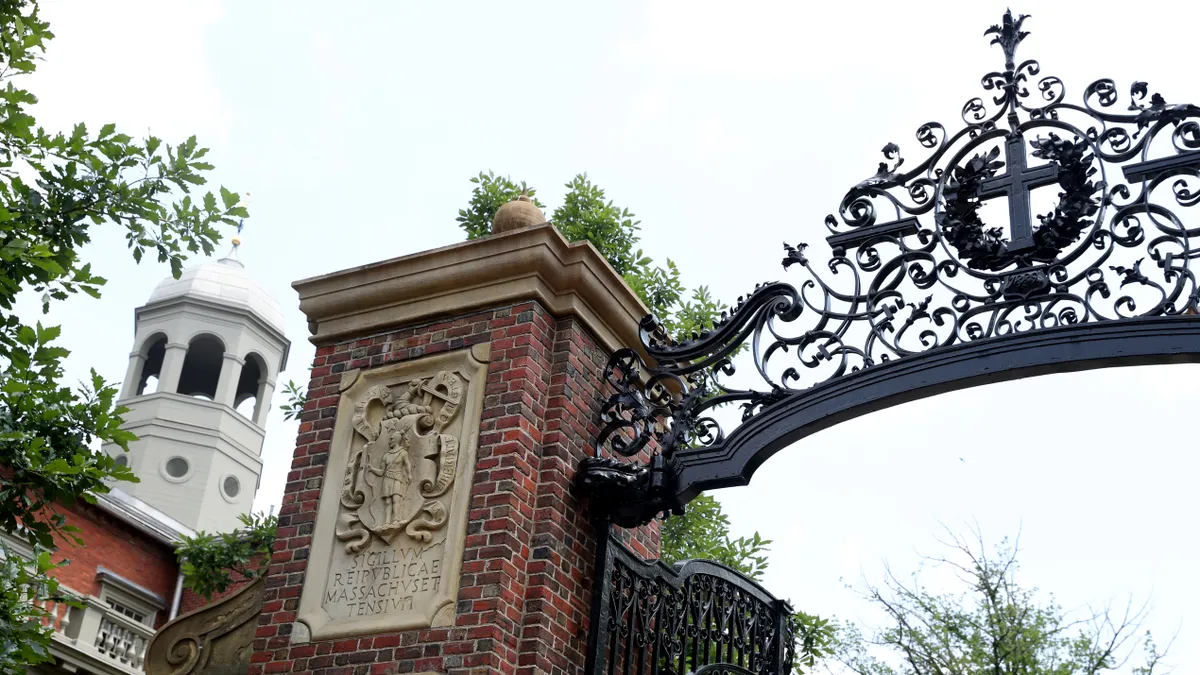When Utica University unveiled plans to reset its published tuition price in 2015, the private New York nonprofit was offering a discount rate of over 62% to prospective students, said Laura Casamento, who retired this year as the university’s president.
There was a growing perception that Utica’s published sticker price of roughly $35,500 was out of reach for its target student population, Casamento said. The university also faced stagnant retention rates.
So the university did what just a few dozen other colleges and universities had done over the decade prior, according to one higher ed consultant. It lowered its published tuition price 42% to under $20,000 to better match the actual amount students pay after factoring in institutional scholarships.
But as more colleges take the tuition reset plunge, questions around the effectiveness of strategy remain. Some colleges have seen immediate and long-term benefits from the practice, with surging enrollments and applications. However, for many colleges, that growth tapered off over the next few years. And the resets were not enough to turn around the financial fortunes of every college.
“For some schools, they did it and maybe they were too far gone,” said Lucie Lapovsky, an economist and higher education consultant who’s worked with colleges on tuition resets. “Most of our private colleges in this country are challenged right now. It’s not easy.”
Enrollment grew the first few years after Utica’s reset, from 4,463 students in fall 2015 to 5,258 students in fall 2017. The university’s retention rate for full-time students also increased by six percentage points over that period, growing to 76%, according to federal data. And graduation rates have steadily ticked up since the reset and now hover around 58%.
However, after the brief boost, Utica’s enrollment has since plummeted to 3,861 students in fall 2022 — lower than what it was before the reset. Casamento said those numbers have rebounded this fall, with first-year enrollment up 31%, transfers up 61%, and international student population nearly tripling compared to last year, “an indication that the university’s impact and reputation in the market is growing,” she said.
Momentum for tuition resets among private colleges has grown since 2015.
In September, two Iowa private institutions, Graceland University and Wartburg College, announced tuition resets of roughly 39% and 45%, respectively. Other institutions — Lasell University, in Massachusetts, Lenoir-Rhyne University, in North Carolina, and Colby-Sawyer College, in New Hampshire — have also recently slashed tuition.
Why do colleges pursue resets?
For decades, colleges have offered merit aid and scholarships in their race to get more students — developing a high-price, high-aid methodology, Lapovsky said.
That has pushed the average discount rate for first-time, full-time students to about 56% at private colleges, she said. But students don’t know the actual cost of attendance until after they’ve applied, filled out financial aid forms and received their acceptance letter, Lapovsky said.
The net price — the published tuition minus financial aid a student receives — of private colleges can be close to what students would pay at public institutions. But many prospective applicants are often under the false impression that only low-income students get aid, Lapovsky said.
“It’s gotten to the point where there is so little correlation between the gross price and the net price that it’s dissuading lot’s of people from looking at a college because they don’t know what they’re going to pay,” said Lapovsky. “A lot of private schools are being excluded from the choice that students have.”
For some private schools, the reasoning behind the high-tuition, high-aid method is falling out of favor. Many prospective students have moved away from relating the price of an institution to its quality, and — contrary to popular belief — most students value the net price of colleges over the scholarships they receive, said Lapovsky.
Many colleges and universities have also grappled with declining enrollments in recent years, Liz Clark, vice president of policy and research at the National Association of College and University Business Officers, said via email.
Some NACUBO members are trying to find ways to stabilize or increase enrollments while addressing concerns around the rising cost of attendance, she said.
“For some colleges, a tuition reset approach may be a solution to this issue,” Clark said.
Do they work?
Tuition pricing resets really started to gain momentum in 2018, when 13 colleges employed the practice, according to Lapovsky.
Colleges that cut tuition in 2018 have had mixed trajectories.
Sweet Briar College, in Virginia, saw enrollment surge in the years following its tuition reset, which it employed just three years after nearly closing its doors.
However, four years after Mills College reset its tuition, the California institution merged with Boston’s Northeastern University following years of financial difficulties.
Research shows tuition resets can be a mixed bag.
Lapovsky analyzed data from 30 institutions that reset tuition between 2013 and 2018. She found almost all saw applications increase, and more than half saw enrollment increases, said Lapovsky.
On average, according to Lapovsky, those institutions saw a 9.6% increase in applications, a 2.5% increase in first-year enrollment, and a 12.1% increase in transfer students the year after the reset.
According to Lapovsky's data, the momentum slowed over time. In the third year of the reset, applications were up just 6.5%, transfers increased 5.7% and first-year enrollment fell 1.1%, compared to the year before the tuition change.
Lapovsky said she has not yet analyzed data on institutions that reset tuition after 2018 because enrollment losses were widespread during the COVID-19 pandemic. She’s awaiting more recent federal data.
A separate study published in 2022 yielded similar results. Analyzing colleges that reset tuition between 2009 and 2019, researchers determined that these practices aren’t related to long-term enrollment increases. However, some evidence points to short-term gains, according to the study.
Net tuition revenue per student also didn’t decrease, the researchers found.
Which colleges should pursue a reset?
Officials at Bridgewater College, in Virginia, are confident the strategy will work for their campus. In September, the small four-year private college dropped its published undergraduate tuition price to $15,000 — over a 60% reduction — for the 2024-25 academic year. They said the move means to provide transparency around the real cost of attendance.
The college has a healthy endowment — about $98 million in fiscal year 2022 — and strong donor support but is not a wealthy institution, said David Bushman, Bridgewater’s president.
Years earlier, Bridgewater leaders rejected resetting tuition out of fear that lowering the sticker price would make the college appear less valuable, Bushman said. But Bridgewater’s high list price may have been scaring off many of the lower-income students the college typically attracts.
“Even though all of us have played the high tuition, high discount rate for a very long time, I think that model for many, many prospective students is broken,” said Bushman. “For us, dissuading those students, or even being complicit in dissuading those students, is problematic from a mission standpoint.”
College leaders should only opt to reset tuition after a period of due diligence and evaluation, said Casamento, of Utica.
And the practice shouldn’t be a standalone effort. Colleges should also review and align their academic portfolios, boost their marketing efforts, and forge partnerships that increase student success and address workforce demands, she added.
In Bridgewater’s case, Bushman believes the move could help the college’s reputation, as officials are being more transparent and straightforward about its costs. It could also allow the college to connect with its alumni and donors who grew jaded by its high price.
And Bridgewater is aiming to lower barriers that may deter potential applicants — many of whom are Pell-eligible or first-generation students, he said. While the college is comfortable with its current enrollment of just over 1,400 students, Bushman believes it has some room to grow.
“I’m certain it’s going to be positive for the college’s financial health moving forward,” Bushman said. “We’ll be more competitive.”





















